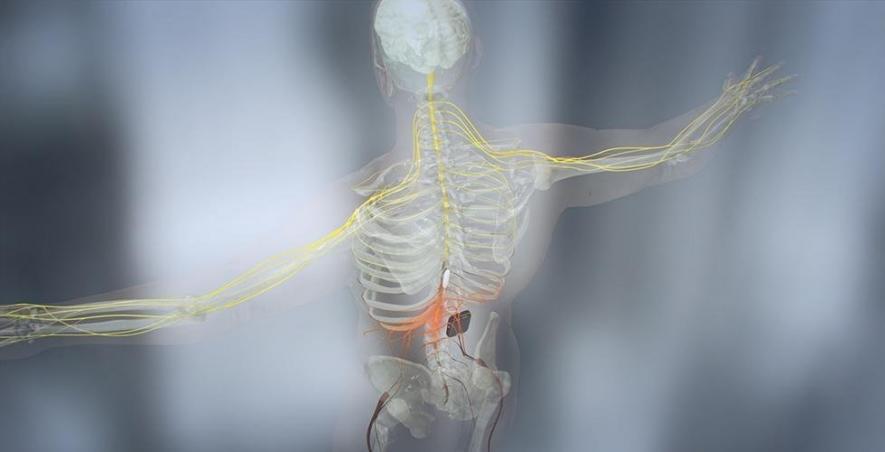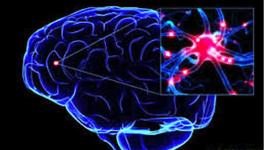New Hope for Quadriplegics: An Implant that Repairs Severed Spinal Chord

Credits: Wings for Life
Andrew Meas, a 32-year old man from the United States, was paralysed after a motorcycle accident in which he suffered a complete spinal cord injury. The injury led to a complete lower body paralysis because of the break in the spinal cord. Now, Meas has regained the ability to move his legs as a result of the success of an experimental technique, which has led to the creation of new neural pathways.
The success of Meas’ treatment is partly due to Christopher Reeve, the actor most known for playing the role of Superman in the 1978 movie adaptation of the comic. Reeve became a quadriplegic in 1995 due to a horse riding accident. After the accident, Christopher along with his wife Dana sought funding for the American Paralysis Foundation, which eventually became the Christopher and Dana Reeve Foundation. The research that led to the breakthrough in Meas’ recovery was partly funded by the Reeve Foundation.
Meas’ spinal cord injury severed the connection between his motor neurons and his brain. Neurons are cells that carry messages from the brain to other parts of the body. They do this in the form of electrical impulses. Neurons connect the brain to the spinal cord, and through the spinal cord to our muscles, skin and joints. This is our central nervous system. An injury to the spinal cord can result in a break in the pathways formed by neurons, which results in a failure for messages to be relayed from the brain to other parts of the body. In Meas’ case, this culminated in a lower body paralysis. His brain was sending instructions to his legs to move, but they never reached his legs.
The accident which caused this injury happened a decade ago, and despite 80 physiotherapy sessions, Meas was unable to make any voluntary movement. This changed when Meas enrolled in a research program at University of Louisville and became one of four patients to receive an implant in his spine which could act as a bridge for transporting signals from the brain to his legs.
The implant is a 16-electrode stimulator connected to a device called an impulse generator which is wirelessly controlled by the researchers or the patient. It performs spinal cord epidural stimulation (scES). The stimulator is placed underneath the site of injury, and essentially amplifies the signals sent by the brain to the lower limbs. Thus, signals from the brain can reach the limbs, so that the participants who have the implant can stand, as well as perform voluntary lower limb movements when the scES device is activated.
Meas underwent surgery in November 2011 to receive the implant. After 34.5 months of activity-based training along with scES, he was able to stand on two legs, then on one, independently, i.e, without any stimulation by the implanted device. According to the researchers who carried out this therapy, many mechanisms could have made voluntary movement possible for Meas. It could be because new axons grew from above the injury into areas below the lesion. It could also have happened because the activity-based training along with scES allowed the creation of new connections among neurons in the spinal cord.
The researchers at Kentucky Spinal Cord Injury Research Center (KSCIRC) at the University of Louisville published an article on these findings in Scientific Reports on 26th October. Susan Harkema, one of the authors and professor at the University, was quoted saying, "The finding should open up new opportunities for recovery-based rehabilitation as an agent for recovery, not just learning how to function with compensatory strategies, even for those with the most severe injuries … What we're finding out is how to tell the spinal cord what to do."
Enrico Rejc, the first author of the article, and assistant professor at the University's Department of Neurological Surgery said, ”The human nervous system can recover from severe spinal cord injury even years after injury," Rejc said. "... It is commonly believed that one year from injury, you are classified as chronic, and it's likely that you will not improve any more. This data is proof of the principle that the human nervous system has much greater recovery capabilities than expected.”
(With inputs from IANS and other reports)
Disclaimer: The views expressed here are the author's personal views, and do not necessarily represent the views of Newsclick.
Get the latest reports & analysis with people's perspective on Protests, movements & deep analytical videos, discussions of the current affairs in your Telegram app. Subscribe to NewsClick's Telegram channel & get Real-Time updates on stories, as they get published on our website.

















